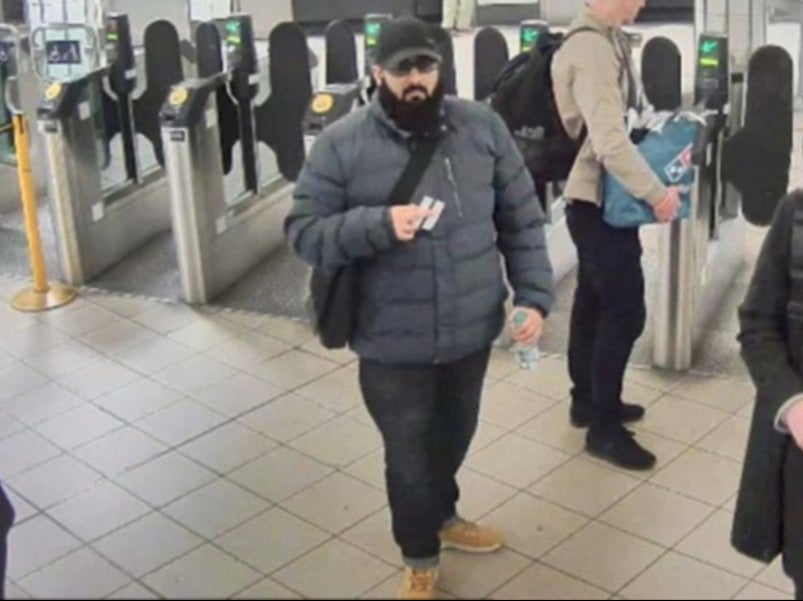Fishmongers’ Hall: MI5 was poised to end investigation into Usman Khan when he launched attack
MI5 received ‘no intelligence’ of attack planning after 11 month surveillance operation, inquest hears

MI5 was considering closing its investigation into a terrorist when he launched a deadly knife rampage in London, an inquest has heard.
A Security Service officer said it had “no intelligence” that Usman Khan was planning an attack, despite months of surveillance following his release from prison in 2019.
The woman, who can only be named as Witness A because of an anonymity ruling, told Thursday’s hearing: “After nearly 11 months of investigation after his release, we were looking at closing the investigation.”
The officer said MI5 did not oppose probation’s decision to allow Khan to travel to the rehabilitation event at Fishmongers’ Hall where he launched the attack on 29 November 2019.
She told the inquests into his victims’ deaths that agents viewed it as an opportunity to provide “enhanced coverage” on Khan and provide “assurance” before closing the probe into him.
At a “joint operational team” meeting between MI5 and counter-terror police on 18 November 2019, Witness A said that no-one raised the possibility that the trip created the risk of a terror attack.
“The context was a rehabilitation event organised by individuals he had a long-standing relationship with,” she added.
“We were hopeful coverage could have been delivered, but regrettably it was not possible.”
Witness A said that both police and MI5 now believe that Khan deliberately targeted members of the Learning Together team in the attack, after “bypassing” Fishmongers’ Hall staff.
Isis claimed responsibility for the rampage, but its statement contained no specific information and the officer said nothing had been found to support the claim.
At the time, MI5 rated Khan as a priority three subject of interest, meaning he required “further action to determine whether he posed a threat”.
The inquests heard that Khan first became known to MI5 as a member of the banned al-Muhajiroun Islamist network in 2008.
Two years later he was prosecuted for preparation of terrorist acts after planning to set up a terrorist training camp in Pakistan.
Khan was part of a cell of extremists who also planned attacks at the London Stock Exchange and other high-profile targets.
The hearing was told that although Khan was not prosecuted over that plot, MI5 intelligence gathered at the time showed he had discussed bombing pubs in Stoke and making a pipe bomb from an al-Qaeda recipe.
Witness A said MI5 mounted an investigation solely focused on Khan after he was put in jail on remand, over fears that he would continue to engage in terrorist activity by communicating with people on the outside to plan attacks or fund terrorism.
Officers received intelligence that inside several different high-security prisons, Khan became an influential inmate among Islamist extremists, and sought to associate with other terror offenders and radicalise inmates.
The inquests heard that despite continuing evidence demonstrating Khan’s extremist mindset, including that he wanted to “die and go to paradise”, MI5 closed the investigation in 2015.
Witness A said she believed the decision was right, adding: “We had carried out quite a significant period of investigation while he was in prison, we received a steady stream of intelligence while in prison, and we saw no activities of national security concern.”
MI5 reopened its investigation into Khan in late 2018, ahead of his automatic release that December.
The hearing was told that officers received two pieces of intelligence - one that he was going to return to his “old ways” of terrorism once freed, and another that he wanted to plan an attack himself - but that they were of “unknown validity and uncorroborated”.
Witness A said MI5 shared the intelligence with counter-terror police, but it was not the service’s role to make sure that was shared with the probation officers and less senior officers managing Khan.
She added that she believed other officials shared concerns that Khan’s apparent compliance with licence conditions and rehabilitation schemes could be to “avoid scrutiny”.
The inquest heard that an internal report concluded that MI5 could not have prevented the attack with different decisions, and found the “investigative and operational decisions were sound”.
Khan is believed to have used his unaccompanied train journey to London strap a fake suicide vest to himself and conceal it under clothing.
He arrived at Fishmongers’ Hall carrying a bag containing knives, which he strapped to his hands in a break before launching his attack.
Khan murdered Jack Merritt, 25, and Saskia Jones, 23, and stabbed three other people before being shot dead by police on London Bridge.
Witness A said MI5 was not aware of the purchases Khan made, including the knives and equipment for the fake suicide vest, days before the attack and may have arrested him if they were. The inquests continue.
Subscribe to Independent Premium to bookmark this article
Want to bookmark your favourite articles and stories to read or reference later? Start your Independent Premium subscription today.

Join our commenting forum
Join thought-provoking conversations, follow other Independent readers and see their replies